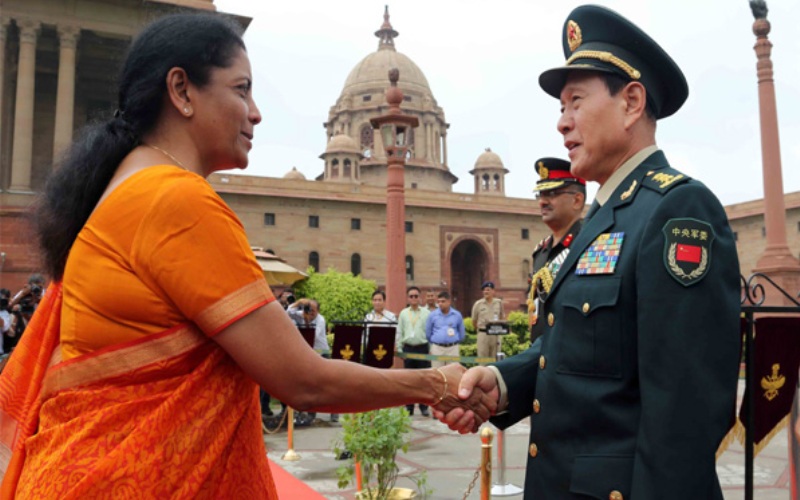New Delhi: Defence Minister, Nirmala Sitharaman and her Chinese counterpart, General Wei Fenghe, on Thursday discussed the Doklam standoff between the two countries during their delegation-level meet, agreeing that it could serve as a model to resolve future conflicts.
According to sources, the two Defence Ministers gave positive views on the “maturity and restraint” displayed by the two neighbouring nations during the 73-day military stand-off last year and said that it could serve as a model to resolve the other disputed matters along the borders in the future.
Addressing the border infrastructure and development projects, which China had flagged as a sovereignty issue, India specified that the measures to improve infrastructure in the border areas were taken in order to enhance connectivity and the living standards of Indian people and should not be seen as efforts against any country.
“Our Border Area development like connectivity, water supply, irrigation, electricity and telecommunications should not be viewed with doubt,” sources quoted Sitharaman as saying. In response, the Chinese officials mentioned the concept of ‘Joint Working Group’ to deal with infrastructure development related issues.
Sources told ANI that India raised objections pertaining to the China-Pakistan Economic Corridor (CPEC), saying that the project passed through Indian territory illegally occupied by Pakistan.
The implementation of a Director General of Military Operations (DGMO)-level hotline was also discussed during their meeting. The Chinese had a proposal for more than one hotline connection.
The talks, pertaining to the hotline, had been in the doldrums as the Chinese had earlier proposed that the Indian DGMO communicated with the officials in the Western Theatre Command (WTC). However, India wanted to establish a direct line of communication with the military headquarters in Beijing.
The WTC of China, which is headquartered in Chengdu, is entrusted with the military responsibility of the borders with India.
General Fenghe, during his talk, repeatedly mentioned about Prime Minister Narendra Modi and his “talks with Chinese President Xi Jinping”, positively refering to Prime Minister Modi’s “vision”.
The two Defence Ministers also agreed upon expanding the engagement between their armed forces related to training, joint exercises and other professional interactions, which should be at the junior, middle and senior levels.
Strategic Military Communication was discussed, with increased number of port calls of military vessels being one of the suggestions. Sitharaman also invited China to send one of their service heads to India soon.
Both sides also decided to work towards a new bilateral Memorandum of Understanding on Defence Exchanges and Cooperation.
General Fenghe is on an official four-day bilateral visit to India from August 21 to 24. He is accompanied by a 24-member strong delegation, which include officials from Central Military Commission, Beijing Military Headquarters, Western Theatre Command and Tibetean Military Region.
Earlier on Tuesday, Prime Minister Modi met Fenghe and appreciated the increased momentum of high-level contacts between India and China in all the spheres.
High profile military officials, including Air Marshal Dingqiu Chang, the Vice Chief of the Joint Staff Department, Central Military Commission, Lieutenant General Guiqing Rong, the Vice Commander and the Chief of Staff of the Western Theatre Command, are part of the delegation.
[source_without_link]ANI[/source_without_link]

